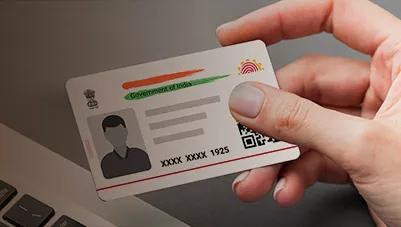Transforming Identity Verification in India Through Aadhaar Number

India is fast becoming digital, and at the center of this change is the Aadhaar. The Aadhaar identifies over a billion people and is now India's main ID method. The Unique Identification Authority of India (UIDAI) developed this 12-digit number. It is the key to proving identity and obtaining resources. This blog will show how the 12-digit Aadhaar number is changing ID processes in India and cover its effects in various fields.
What is the Aadhaar Number?
A UID number is a unique identification number generated and assigned by the UIDAI, and it’s a 12-digit number. This number is linked to their biometric and demographic details. These include fingerprints, an iris scan, their name, date of birth, address, and sex. Aadhaar is open to seekers, especially Indian residents. Over a billion people have registered in the Aadhaar Programme.
The Aadhaar number is not just an identification document card as is a voter’s ID card or a PAN card. It is an ID card. It is expected for different services from the government and from the private sector. It enables Aadhaar holders to open bank accounts. They need no other ID. They can also get a new mobile SIM and access subsidies.
How the Aadhaar Number is used for Authentication
Identification proof was always cumbersome in the country before the digital revolution, and several documents and formalities would take a lot of time to fulfill. In more complicated cases, an individual may have to endure a lengthy search for multiple identification documents that may not be efficiently verifiable or may be fake; thankfully, the Aadhaar has put an end to this.
Here’s how the Aadhaar number is transforming identity verification:
- Biometric Authentication: The Aadhaar is unique to each person. The app uses fingerprints and iris scans. That is the reason, this makes sure that the person presenting the Aadhaar is the real owner and not, an imposter.
- E-KYC (Know Your Customer): KYC is particularly applied in banking and telecom organizations. They have to verify or recognize customers. This has been made much easier by the Aadhaar. An e-KYC system can ascertain an individual’s identity over the Internet using only an Aadhaar and no physical documents.
- OTP-Based Authentication: If you can't use biometrics, verify with your Aadhaar. An OTP will be sent to that number. This provides convenient identification validation in different online operations.
- UIDAI Authentication API: The Aadhaar number holder can provide their Aadhaar. They will get a one-time password to prove their identity in an online transaction to a business or government that uses UIDAI's API. This helps with tasks like opening a bank account, subscribing to a new mobile operator or getting a government subsidy.
Transforming Various Sectors
The Aadhaar is no more about ease of identification but the way it is remodeling several significant sectors in India. Now, let’s try to understand in detail how the Aadhaar has made the biggest difference in some of these fields.
1. Holding of financial institutions and banking institutions
In the banking and financial services sector the tool has gone a long way in changing the face of KYC through the Aadhaar. Before, opening an account with a bank, several personal identifications, and bills from utility companies, among others were needed. Currently, the Aadhaar can only be used for e-KYC aims to enable customer account opening and service operations in banks.
This has improved the processes and made them a bit more secure. An individual with the given Aadhaar can access these financial services. Also, G2C services like Direct Benefit Transfers (DBT) use the Aadhaar to send subsidies to eligible citizens' bank accounts. This removes middlemen and reduces fraud.
2. Telecommunications
Previously known as UID, the Aadhaar helps identify customers in telecom. Mobile stakeholders now use e-KYC via Aadhaar to identify SIM card customers. That which used to take several days can now be done in minutes. This weeded out each mobile link with a verified person. It will minimize fake or unknown connections.
3. Government Services
The biggest boom to the government is in the distribution of services where the Aadhaar plays a vital role. India’s government has begun using the Aadhaar. The role of social policy is to make certain that subsidies pensions, and local support get to the targeted population. This has minimized leakages and fraud in welfare schemes in the manner that has been discussed. For example, the Public Distribution System (PDS) distributes food and fuel subsidies. It now uses an Aadhaar to verify the beneficiary's identity.
4. Healthcare
In the aspect of health care, Aadhaar has helped persons to easily access health care services. Health insurance schemes use the Aadhaar. It helps hospitals confirm a patient's government treatment entitlement. Also, the center's flagship program, Ayushman Bharat, delivers health insurance to the poor. It uses an Aadhaar for ID and to give money to eligible families.
5. Education
The Aadhaar is now used to track and identify students in various education programs. The Aadhaar protects only genuine students. It applies to scholarship grants, free textbooks, mid-day meals, and PDS.windows. This has been very effective in minimizing additional and fake claims within the education sector.
Privacy Concerns and Safeguards
Aadhaar numbers have benefits. But, like a coin, they raise privacy and security concerns. Critics noted that Aadhaar is collecting more biometric data. This raises the risk of hacking or misuse.
Also, people can select a 'masked aadhaar.' It will hide the first eight digits of an Aadhaar and show the last four. This adds extra security when sharing our Aadhaar details with third parties.
The Future of Aadhaar in Identity Verification
In the future, given the tendency for India to become more digital, the Aadhaar will probably also be used more as an identification number. Facial recognition has been scheduled as the next on the list of government biometric authentication as an addition to the Aadhaar number, which makes it even safer and more flexible as an identification instrument.
There is also a possibility of getting an Aadhaar linked to other services as well as strengthening identity establishment across sectors with developing technology. The Aadhaar provides a perfect and cost-effective solution for the identities of customers for various types of businesses.
Conclusion
Aadhaar number has completely altered the nature of identification in India in every possible manner. In banking, telecommunication, health care, and government services, matters have gained efficiency, efficiency has enhanced, and security has increased with the help of the Aadhaar. Because of the privacy issues, there is a caution that the system is as secure as it can be made and is altogether safe.
Thus, the Aadhaar number will continue to be first and foremost an indispensable instrument for businesses and governments in India on its way to digitalization.





